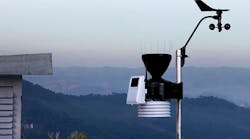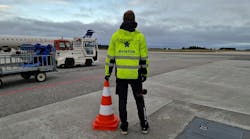Kenneth Evers, Director of Safety, Burgess Aircraft Management / OzAir Charter Service, joins AMT to discuss Safety Management Systems (SMS). Evers has a long history in the world of SMS, starting with the cattle industry in Australia, and now applies his expertise to aviation. Here, he discusses why adopting an SMS is important, how to develop a successful SMS and how to get employees to buy in to it.
AMT: Could you start by defining what a safety management system is?
Evers: I think initially we view a safety management system on a cursory glance as a system we have in place to ensure safe operations in our company.
Yes, it's foundational upon safety, but it's just as foundationally on culture. A safety management system is about implementing procedures and practices that ensure the highest level of safety as possible. Especially in aviation, it's got to be “as possible” because if we want to be completely safe, we wouldn't even fly.
You take it as safe as you possibly can given the situation, but then it's about encouraging those within the company to join with you. If you have a safety management system and you've got a manual and you've got rules and you've got regulations, that's terrific, that's good. But it doesn't really mean anything if no one gets it, if no one understands why you do it. A safety management system, to me, is you have procedures and practices in place to ensure a safe operation and you have a buy-in from every person who works there. Once you have those things combined, then you have a safety management system.
AMT: How do you know if you need an SMS?
Evers: I think if you ask the question, you've answered it. Should we have a safety management system? The fact that you ask the question means maybe you probably need one.
And it's an excellent question – do you need a safety management system? I would counter that with, can you continue your operation without one? When I first put in a safety management system in place here, we got a lot of really curious onlookers.
But then you break it down. The first step – let's have a look at fatigue. How are we managing fatigue? At first people say, "Well, we don't need to manage that." But then you start having one-on-one interactions with pilots, having one-on-one interactions with dispatch and maintenance guys, and say, "Hey, have you ever come to work really, really tired?" And they're like, "Oh yeah." What can we do, and that's the critical thing for managers, what can we do [to help manage fatigue]?
Next, you look at safe practices. The one that's kind of always overlooked is communication. Say there was an accident that occurred in another state. "What can we learn from that?" Initially, people say, "Well, we're very good. We wouldn't make that same mistake." But then you start talking to people one on one, I sometimes take them to lunch, and inevitably they start admitting, “yeah, I guess sometimes that does happen.”
So you start that dialogue around safety. They can talk with you about their one-on-one situations, things that they didn't know, that they should have. That's the thing I really enjoy ... is watching that eureka moment for people. ... people who are just vehemently opposed to SMS because of what they consider regulations or rules ... come full circle and go, "Oh, hang on, I get this. This is about taking care of me."
AMT: So you’ve determined adopting an SMS is in your operation’s best interest, what goes into the planning of it?
Evers: The very first plan you must make is you must look in the mirror. If you're going to be a safety manager, you're potentially in for a pretty arduous road. You’ll have people against it, people who are onboard with SMS but only if it’s their way, and then the rest who are somewhere in the middle. So you have to be wholly committed and ready to work with all those personalities.
Then you need to ensure that top management are behind it. If top management are not behind your SMS, it'll never work. Because, at the end of the day, they're the ones paying for it. And when I say top management sponsorship of it, not just verbally and financially, but from those individuals themselves. They’ll have to walk the walk and put their money where their mouth is so everyone can see they too follow the SMS.
AMT: What are the components of a good SMS?
Evers: From my own experience, the first component I would argue for in a good safety management system is a Just Safety Culture. A Just Safety Culture means when someone makes a mistake, rather than crucify them, we look at that and say, "Okay, what can we learn from this? How can we all learn from this?" Instead of there being punishment meted out on the person who made the mistake, it's a learning opportunity.
Of course, you've got the four pillars of SMS [Safety Policy. Safety Risk Management. Safety Assurance. Safety Promotion], which everyone preaches about. They’re great things. But the componentry of an SMS is wrapped around that. But after establishing the Just Safety Culture, you've got to have a means of reporting that doesn’t create a snitching culture, especially in aviation.
You've got to be very, very careful that you don't destroy CRM [Crew Resource Management] by implementing an SMS. If you're worried about the person sitting beside you filing a safety report on you if you make one tiny mistake ... that destroys CRM. Absolutely destroys it. You have to be super careful how you manage that. So communicate and educate what a safety report is, what a hazard is, what a risk is, when you need to write a report, etc.
Next, you need a circular approach. You identify a hazard. You determine what to do about that hazard. Can you eliminate it? Can you mitigate it? How do we approach that? And you implement whatever you need to do to handle that.
Oftentimes what is missing out of an SMS comes under the pillar of safety assurance. It's ensuring that the procedure you've put in place to handle that hazard or to resolve that situation is effective.
AMT: What do you do to get everyone onboard with an SMS and buy into it?
Evers: I tend to try and find the person who's most opposed, and I meet with them and I talk to them. I find out everything I possibly can about why they’re against the SMS, learn about what the issues are, what their concerns are, etc. So I work with them and say, "Look, this is what I'm trying to do." And I literally ask them for their help. "This is how I'm trying to do it. I know you're opposed to this, so help me stay in touch with reality." Normally they'll jump at that. Then we just start working on little things. We're going to file a safe report on – for example, there are puddles on the hangar floor and someone slipped – how can we fix that?
And maybe they say, "...Maybe we could put a sign up. That's a good idea, let's just get a sign up." So we've got wet floor signs, we put wet floor signs out. And then you get a little bit more buy-in, a little bit more buy-in, and all of a sudden they start to see, "Hey, this actually works."
That's how I tend to go about it. I've done it in the past with other SMSs. I've found people who are just vehemently opposed to it, made a believer out of them. But then I say all that to say this, if I don't live it and if top management doesn't live it, it's all pointless. It's completely pointless. It's not even worth it. I've been very blessed with the company I work for. Top management are very strong believers in it. I don't make any decision without discussing it with the safety committee, and on the safety committee is all the top management. I don't believe in surprising anyone.



